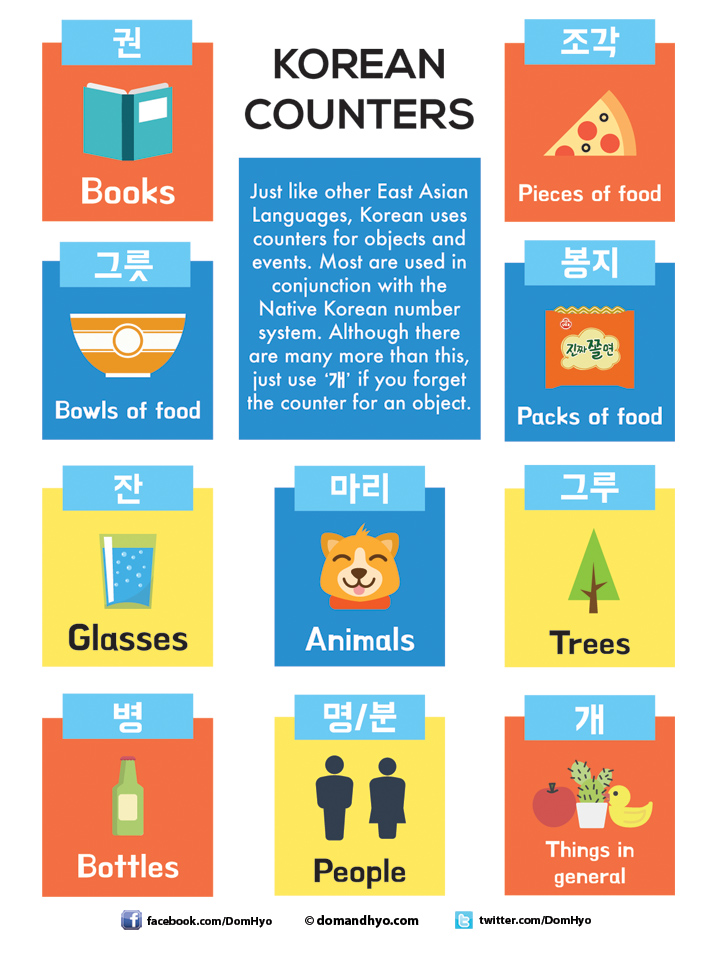
just like other East Asian Languages, Korean uses counters for objects and events. Most are used in conjunction with the Native Korean number system. Although there are many more than this, just use ‘개’ if you forget the counter for an object.
Counters in this graphic:
권 (kweon) = Used for counting books. [책 두 권 = two books]
그릇 (geu-reut) = Used for counting bowls of food. [밥 한 그릇 = one bowl of rice]
잔 (jan) = Used for counting glasses of drinks. [소주 한 잔 = one glass of soju]
병 (byeong) = Used for counting bottles. [맥주 두 병 = two bottles of beer]
마리 (ma-ri) = Used for counting animals. [강아지 세 마리 = three puppies]
명/분 (myeong/bun) = Used for counting people. 명 is informal while 분 is formal [한 명 = one person]
조각 (jo-gak) = Used for counting pieces of food. [피자 두 조각 = two pieces of pizza]
봉지 (bong-ji) = Used for counting packages of food. [라면 네 봉지 = four packs of ramyeon]
그루 (geu-ru) = Used for counting trees. [나무 세 그루 = three trees]
개 (gae) = Used in general for counting things. Use this if you forget other counters.
